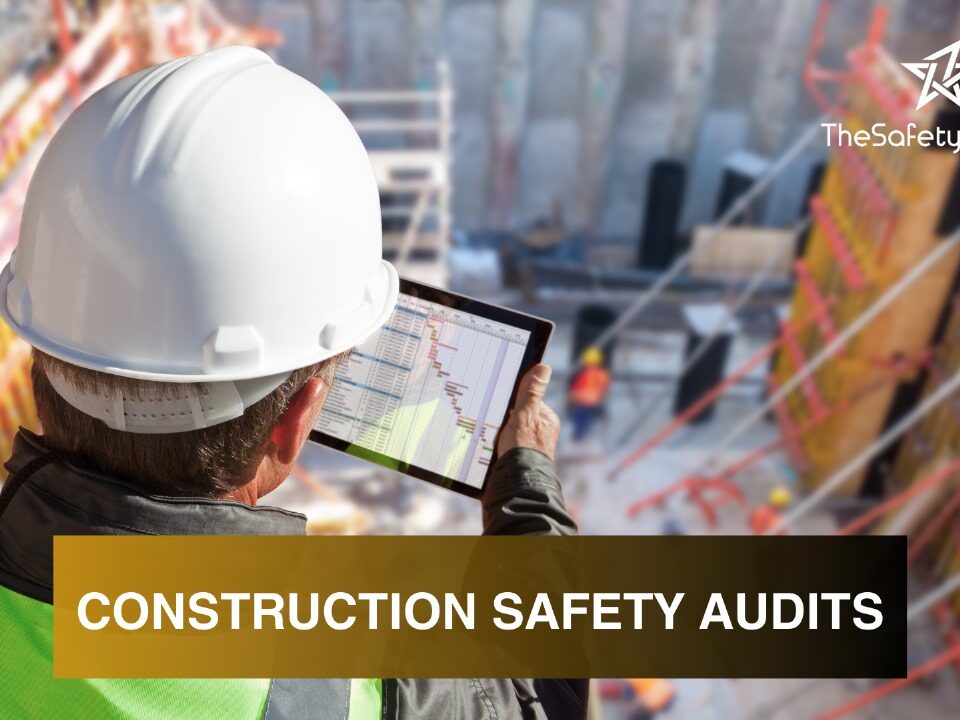Material Handling Audit Including Crane, Forklift, Hydra, etc.: Ensuring Safe and Efficient Operations

Safety Gap Assessment with Technology and Artificial Intelligence
January 15, 2025
Behavior-Based Safety Implementation: Overcoming Resistance
January 17, 2025Introduction
Material handling is a critical aspect of industrial operations, encompassing the movement, storage, control, and protection of materials and products throughout the manufacturing, distribution, consumption, and disposal processes. Effective material handling ensures not only operational efficiency but also the safety of the workforce. Equipment such as cranes, forklifts, and Hydra cranes play a significant role in these operations. However, due to the inherent risks associated with the use of such equipment, conducting a comprehensive material handling audit is essential to identify potential hazards, ensure compliance with safety regulations, and improve overall safety performance.
In this essay, we will explore the key components of a material handling audit, focusing on equipment such as cranes, forklifts, and Hydra cranes. We will also discuss the importance of safety management, risk assessment, and continuous improvement in ensuring safe and efficient material handling operations.
Understanding Material Handling Equipment
Before diving into the specifics of a material handling audit, it’s essential to understand the key equipment involved in material handling operations:
- Cranes: Cranes are used to lift and move heavy materials horizontally and vertically. Types of cranes include overhead cranes, mobile cranes, and tower cranes, each suited for specific tasks.
- Forklifts: Forklifts are powered industrial trucks used to lift and move materials over short distances. They are commonly used in warehouses and manufacturing plants.
- Hydra Cranes: Hydra cranes are versatile mobile cranes used for lifting and transporting heavy loads over short distances. They are particularly popular in construction and manufacturing sectors.
Importance of Material Handling Audit
A material handling audit is a systematic examination of the equipment, processes, and practices involved in material handling operations. The primary goals of the audit are to:
- Identify Hazards: The audit helps in identifying potential hazards associated with material handling equipment and operations, which could lead to accidents or injuries.
- Ensure Compliance: It ensures that the organization complies with relevant safety regulations and standards, such as OSHA (Occupational Safety and Health Administration) or local safety regulations.
- Improve Efficiency: By assessing the effectiveness of material handling practices, the audit can identify opportunities for improving operational efficiency and reducing costs.
- Promote a Safety Culture: Regular audits reinforce the importance of safety and promote a culture where safety is prioritized over productivity.
Components of a Material Handling Audit
A comprehensive material handling audit should cover several key components, including equipment inspection, operator competency, workplace layout, and safety management practices.
1. Equipment Inspection
The first step in a material handling audit is a thorough inspection of the equipment used in material handling operations. This includes cranes, forklifts, Hydra cranes, and any other machinery involved.
Key Areas to Inspect:
- Condition of Equipment: Check for wear and tear, damage, or defects that could compromise safety. This includes inspecting cables, hooks, tires, hydraulic systems, and other critical components.
- Maintenance Records: Review maintenance logs to ensure that equipment is regularly serviced and any issues are promptly addressed. Preventive maintenance is crucial to avoid unexpected failures.
- Safety Features: Verify that all safety features, such as emergency stop buttons, load limiters, and warning lights, are functional and meet regulatory requirements.
- Load Testing: Conduct load tests to ensure that the equipment can handle the maximum rated capacity without compromising safety.
2. Operator Competency
Even the best-maintained equipment can become hazardous in the hands of an untrained or inexperienced operator. Ensuring that operators are competent and qualified is a critical aspect of the audit.
Key Areas to Assess:
- Training Records: Verify that operators have received the necessary training and certification to operate the equipment. This includes training on safe operation, load handling, and emergency procedures.
- Skill Assessment: Conduct practical assessments to ensure that operators can safely and efficiently handle the equipment. This may involve observing them during actual operations or conducting simulated exercises.
- Refresher Training: Ensure that operators receive periodic refresher training to stay updated on safety practices and regulatory changes.
3. Workplace Layout and Environment
The physical layout of the workplace and the environment in which material handling operations occur can significantly impact safety and efficiency.
Key Areas to Evaluate:
- Clear Pathways: Ensure that pathways are clear of obstructions and adequately marked. This reduces the risk of collisions and ensures smooth movement of materials.
- Loading and Unloading Areas: Evaluate the design and organization of loading and unloading areas to ensure that they are safe and efficient. This includes checking for proper signage, adequate lighting, and the availability of safety barriers.
- Environmental Conditions: Assess environmental factors such as lighting, ventilation, and weather conditions that could affect material handling operations. For example, poor lighting could impair visibility, leading to accidents.
- Ergonomics: Consider the ergonomic design of workstations and equipment to reduce the risk of musculoskeletal injuries among workers.
4. Safety Management Practices
A robust safety management system is essential for the successful implementation of material handling safety practices. This includes policies, procedures, and oversight mechanisms that ensure a safe working environment.
Key Areas to Review:
- Safety Policies: Review the organization’s safety policies to ensure that they address material handling risks and provide clear guidelines for safe operations.
- Incident Reporting: Evaluate the incident reporting system to ensure that accidents, near misses, and unsafe conditions are promptly reported and investigated. This helps in identifying trends and implementing corrective actions.
- Emergency Preparedness: Assess the organization’s emergency preparedness plan, including evacuation procedures, first aid training, and the availability of emergency equipment.
- Continuous Improvement: Ensure that the organization has a process for continuously improving safety practices based on audit findings, incident reports, and feedback from employees.
Overcoming Challenges in Material Handling Audits
While conducting a material handling audit is essential, it can also present several challenges. Overcoming these challenges is key to ensuring a successful audit.
1. Resistance to Change
Employees and management may resist changes to established material handling practices, especially if they perceive them as time-consuming or costly. Overcoming this resistance requires effective communication and demonstrating the benefits of improved safety and efficiency.
2. Resource Constraints
Conducting a thorough audit requires time, personnel, and financial resources. Organizations must prioritize safety and allocate the necessary resources to conduct regular audits.
3. Complex Operations
In complex industrial environments, material handling operations may involve multiple types of equipment and processes. Auditors must have the expertise to assess all aspects of material handling and identify potential hazards.
Conclusion
A material handling audit is a critical tool for ensuring safe and efficient operations involving cranes, forklifts, Hydra cranes, and other material handling equipment. By focusing on equipment inspection, operator competency, workplace layout, and safety management practices, organizations can identify and mitigate risks, ensure compliance with safety regulations, and promote a culture of safety. Despite the challenges that may arise during the audit process, the benefits of improved safety and operational efficiency far outweigh the costs. Ultimately, a well-conducted material handling audit not only protects employees from harm but also enhances productivity and contributes to the long-term success of the organization.


